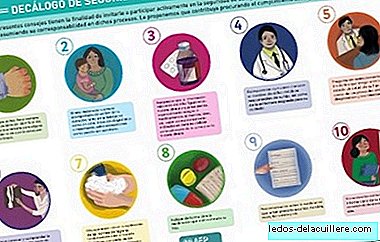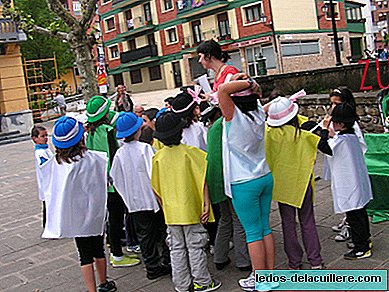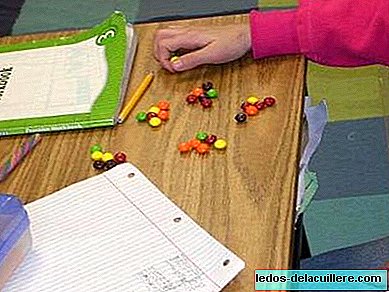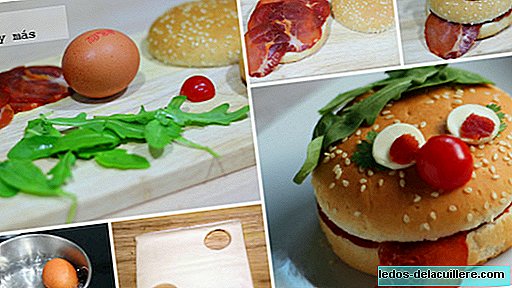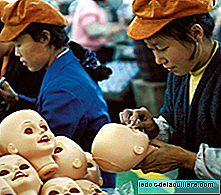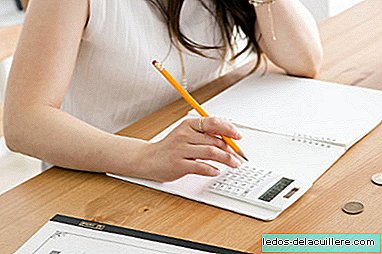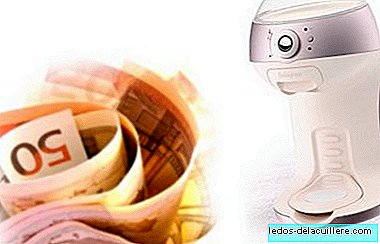
Yesterday we talked about the machine Babynes Nestlé and we explain why the milk that this machine prepares is not entirely recommended for babies, not because it is bad, that we do not know (I do not think, go), but because it is prepared at an inappropriate temperature if we have in it counts the recommendations of FAO and WHO.
Today we are going to look at what it can mean for parents to buy this machine and the corresponding capsules to see how much does it go to account (Well, on account it doesn't work out, I already tell you that beforehand) turn to this system to feed a baby.
As with the Nespresso, whose comparison is inevitable, the sum of machine and capsules makes every time you drink a coffee you wonder how much it has cost you, realizing that it is not precisely little. However it is a practical machine and practicality is obviously paid.
The machine must be bought
The first thing to keep in mind is that compared to making a bottle in a “handmade” way, here you have to use a machine that obviously costs money.
Looking in the Swiss store, where for now it is the only place where you can buy, we see that it costs 249 Swiss francs, which in return are 203 euros.
Already in itself it is a money to take into account when purchasing a machine that has little laptop, so it only solves the ballot of the bottles that we prepare at home.
Different capsules according to age
Another thing to keep in mind is that there are different capsules according to age and, of each type, at least up to 6 months, there are two different amounts to choose from.

In order not to complicate the calculations much, I will rely on the ml / euro to make the comparisons, taking as a sample a Nestle milk, the Nan-1, whose 800 gram can has an average price in Spain of about 12.5 euros ( I have seen it online at 13.75 euros and 11.85 in an online pharmacy).
Let's say we have a newborn in front of us, for which we will choose the capsules for 1 to 4 weeks.
Each capsule contains 90 or 120 ml, with 26 capsules coming in each box, which cost, in exchange, 40,10 euros those of 90 and 43,37 Euro 120 ml per capsule.
If we divide the total of the box, for example the one of 90 ml by 26 capsules we will know how much a bottle of 90 ml costs: 40,10 euros / 26 capsules = 1,54 Euros
Nan-1 milk, which costs 12.5 euros, carries 800 grams of powder. To prepare 90 ml of bottle 3 cups are necessary, equivalent to 12.9 grams in weight.
We make a rule of three and calculate the price of 12.9 grams: 12.9 grams x 12.5 euros / 800 grams = 0,20 Euros
That is, preparing a bottle of artificial milk "by hand", costs 20 cents. With the machine 1.54 euros. In other words, With what we spend on preparing a bottle of BabyNes we can prepare 7.7 bottles of powdered milk.
If the baby is two months old and is rather greedy
Making another comparison that will not leave the capsules so bad, we opted this time for the 2-month baby capsules of 180 ml (there are also 150 ml), which cost 43,37 euros for every 26 capsules.
We do the same calculation and divide the total of the box by 26 capsules to know how much a bottle of 180 ml costs: 43.37 euros / 26 capsules = 1.67 euros.
Nan-1 milk, which costs 12.5 euros, carries 800 grams of powder. To prepare 180 ml of bottle 6 capsules are needed, equivalent to 25.8 grams by weight.
We make a rule of three and calculate the price of 25.8 grams: 25.8 grams x 12.5 euros / 800 grams = 0,40 Euros
The difference is not so much, but it is still a lot, because preparing a 180 ml bottle with powder costs 0.40 euroswhile doing it with the machine it costs 1.67 euros. For each machine-made bottle we get 4 bottles of the others.
If we also take into account that with the capsules we cannot choose the amount we want to prepare to store the rest, surely more money is lost with this system (with the powders you can choose how much to prepare at any time, whether 120, 150 or 180 ml, with the machine the capsules are 150 ml or 180 ml). I guess the most practical is to buy several capsule models and vary as we see. The problem will come if we give 150 ml and want a little more, which is when you have to throw the pot of powdered milk that we have in case this happens.
Conclusions
It can be more practical than preparing bottles and perhaps it would be advisable if we have money left over and if they make a new version that heats the water at 70ºC. If this is not the case, I don't see any sense in buying something that can make a bottle cost us 4 to 7 times more.


